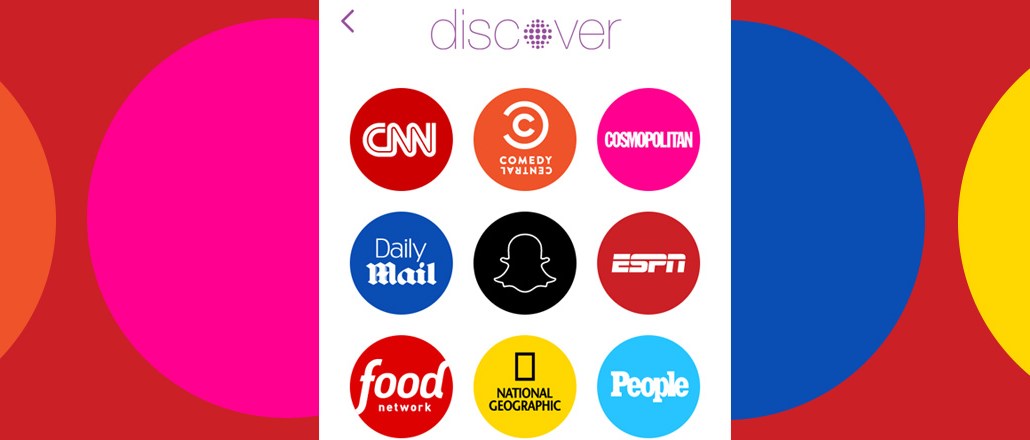
Snapchat’s real benefits to publishers remain unproven, but some have seen enough potential upsides to hire teams of specialists to figure out content strategies on the platform.
CNN, for one, has nine people working on various social platforms, but Snapchat is the only one that has its own team, consisting of one design and two edit staffers. Daily Mail has eight. National Geographic has one full-time Snapchat staffer and said it’s looking to add more.
Vox.com isn’t on Snapchat Discover yet but has posted job openings for three Snapchat specialists in anticipation of being added to the section in the summer. Among other requirements, such as digital video production, Vox’s Snapchat producer must possess a “desire to live and breathe Snapchat.”
The move to hire specialists is a big investment but probably a necessity for a platform like Snapchat, which has its own vernacular and conventions. Publishers can’t just port over their content, although early Discover publishers like Vice mostly do.
Everything about publishing to Snapchat is distinct — from Snapchat’s own CMS to its vertical video format to its interface to its demographic. There’s nothing to stop publishers from repurposing existing stories and videos for the app (and some did, at least initially), but that’s hardly the best use of a platform that’s heavily used by Gen Y. When posting on a big news story, for example, CNN assumes that Snapchat users are new to the subject.

“Snapchat is a really, really bespoke platform for us,” said Samantha Barry, head of social news for CNN. “It’s not cut-and-paste. It’s more of a magazine edition.”
Snapchat also is having brands and publishers shoot video vertically, a departure from the standard practice of shooting horizontal video. For CNN, that means asking its cameramen to shoot extra video for the platform.
Jon Steinberg, the North American CEO of Daily Mail, said the publication needs a dedicated Snapchat team because each of the 15 pieces it publishes daily on the app has to be built from scratch. “It’s a different canvas,” he said. “Every snap is custom animation, custom experience, custom design. It’s the only platform where we have dedicated staffers.”
Publishers that have been successful on various social platforms have been so because they created content specific to those platforms, said Jason Stein, founder and CEO of Laundry Service. And Snapchat is claiming 100 million active daily users, 37 percent of them age 18-24, an age group publishers (and advertisers) are keen to appeal to. “It’s a new platform, and it’s not clear what the ROI is,” Stein said. “But the people are there. It’s too big to ignore.”

That doesn’t mean Snapchat doesn’t come with its workflow challenges and questions around the payoff. Publishers can’t get the benefit of traffic to their sites because the platform is self-contained. They can sell advertising into their channel, but the disappearing nature of the content and inability to link out limits its appeal to advertisers.
It’s true that brands and publishers that need to see a clear ROI aren’t convinced of Snapchat’s value yet, said Paul Berry, CEO of RebelMouse. “Snapchat is tricky,” he said. “At least with Facebook or Twitter, you can link it to traffic. Snapchat, you have to rely on the network effect.” But those who get in early are getting positive press out of it and anecdotally, positive feelings from users, who may be more inclined to share messages and content from those brands and publishers.
That’s what publishers like Vox.com are betting. The publisher is highly interested in Snapchat because its mission of explaining the news is tailor-made for the app’s young audience, said Jonathan Hunt, vp of global marketing and partnerships at Vox Media. “There’s great advertising upside on the platform, but there’s an even greater audience and brand-building opportunity,” he said.
Image courtesy of Snapchat.
More in Media

Here are the biggest moments in AI for publishers in 2025
Here are some of the moments that defined how publishers adapted to the AI era this year.

Digiday+ Research roundup: Gen Z news consumption and diversification in the DSP space were 2025’s top trends
As 2025 winds down, we rounded up the biggest trends of the year, based on the data that resonated the most with Digiday’s readers.

What publishers are wishing for this holiday season: End AI scraping and determine AI-powered audience value
Publishers want a fair, structured, regulated AI environment and they also want to define what the next decade of audience metrics looks like.





